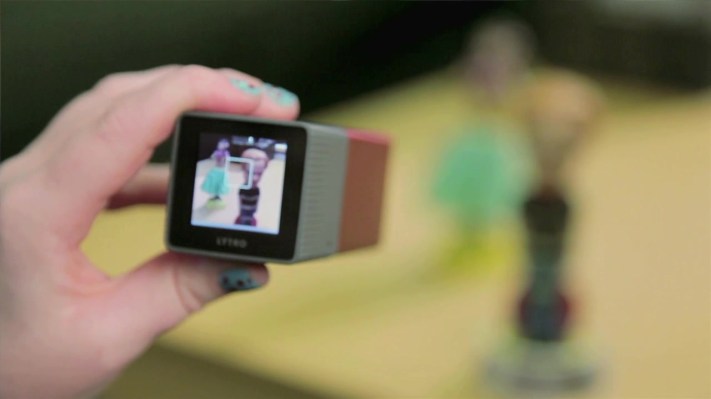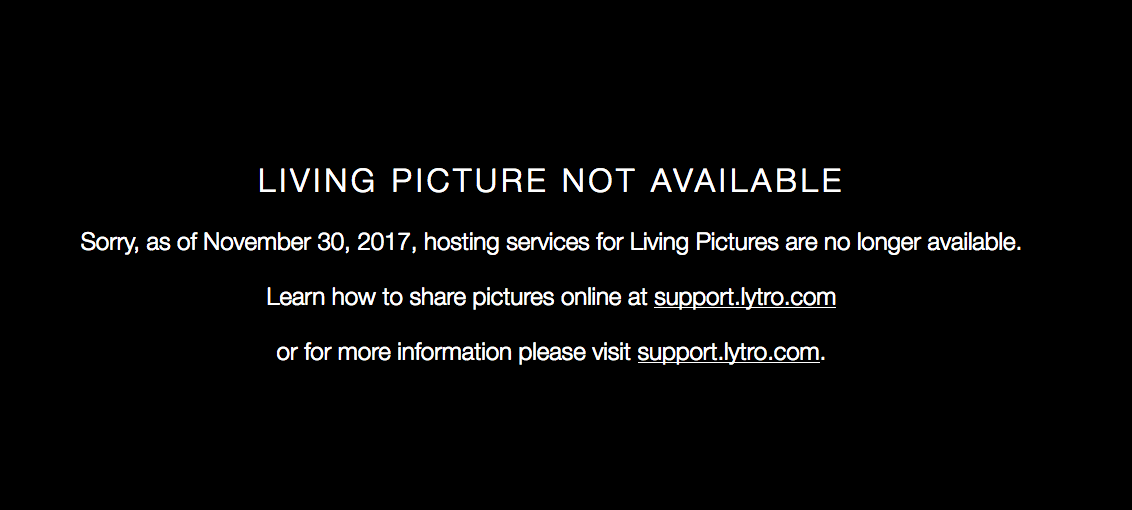As part of its move away from consumer gear toward professional cinema hardware, Lytro has killed off the site that once hosted its “living pictures,” still photos taken with its cameras that could be refocused after the fact. This will turn a handful of those pictures, where they had been embedded on the web over the past few years, into empty frames. If you want to see light field images now, you’ll need to see them in the desktop app.
In 2012, when I reviewed the original Lytro camera, I wrote:
“The Lytro software is limited to browsing your photos and grouping them into ‘stories,’ and you can upload them directly to (and only to) Lytro, which will serve them for… eternity, you hope. Not much of a choice there.”
As I half expected would be the case at the time, eternity turned out to be on the short side — until it became inconvenient for the company to host it. Of course, it’s unlikely there were many active users of the service now; Lytro left the consumer camera market two years ago when there proved to be little demand for its technically amazing but ultimately gimmicky cameras.
One never should trust services that offer so little flexibility in how you access and serve your own data, but Lytro’s tech was unique in that it essentially required a special plug-in to view properly. These plug-ins you would embed wherever you wanted to share a “living picture,” a rather clumsy solution that contributed to the usability problems endemic to the whole Lytro proposition.
The living picture format is done forever unless the company releases some way to self-host them, but it seems unlikely. Any remaining users will have to export to ordinary stills or movie files in the desktop app.
I’m happy to see Lytro evolving and applying its very cool tech to a new market, but the bumpy road it has traveled is littered with lessons for young hardware startups.

